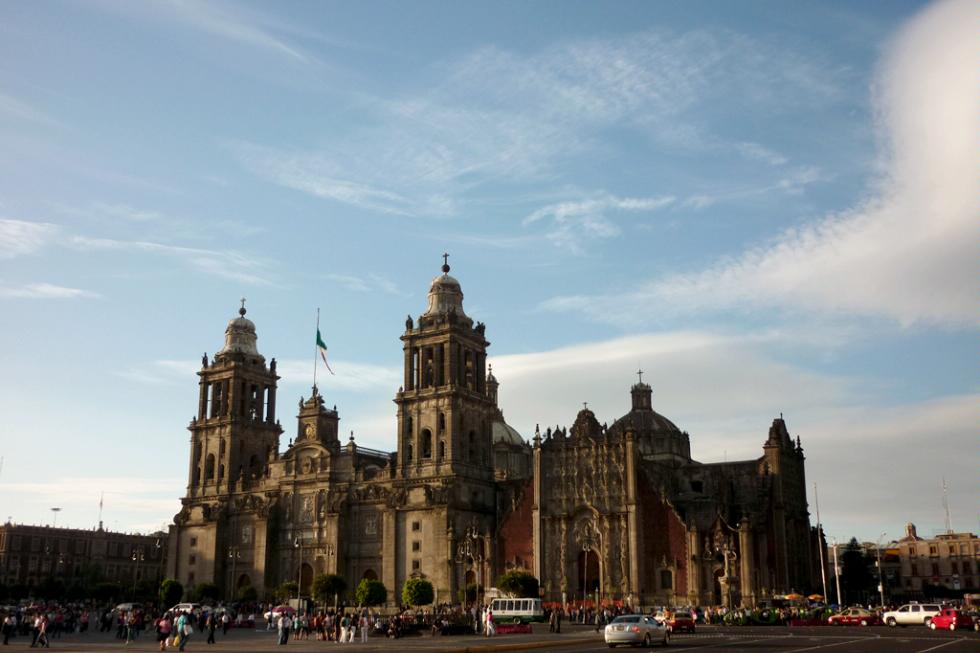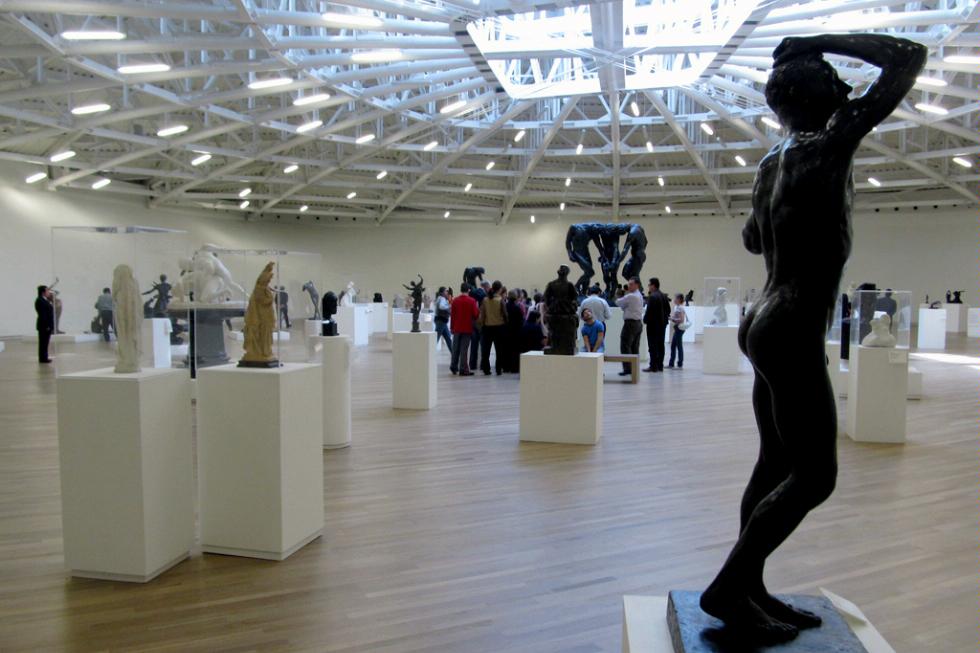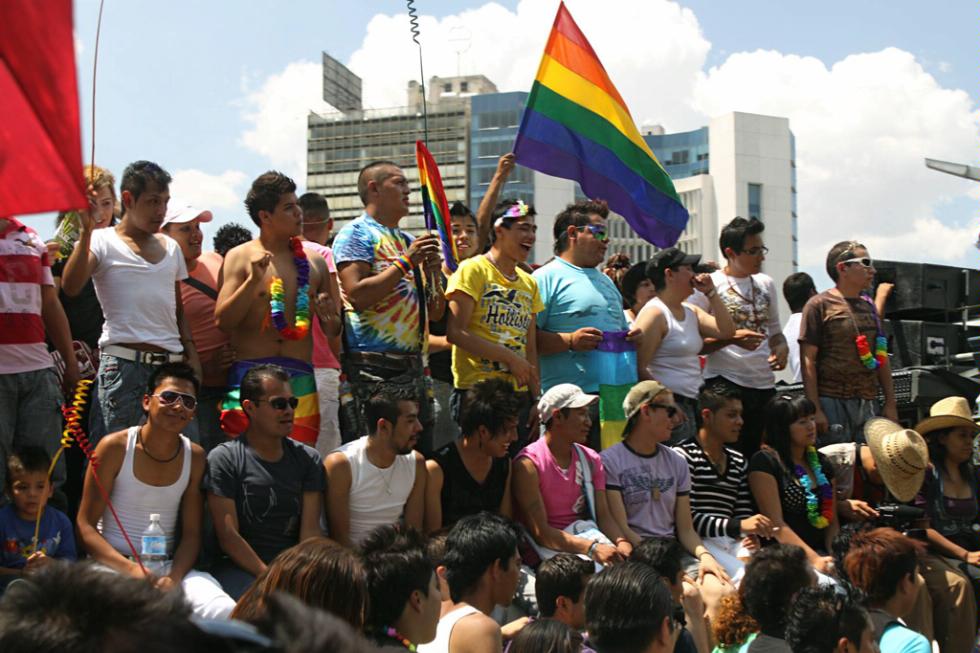5 Things You Didn't Know About Mexico City
By
Insider's Mexico City
By Joy Hepp
Even though residents have had over 1,000 years to expose all its secrets, the greatest city in the western hemisphere still has a few tricks up its sleeve. Here are five quirky looks at Mexico's capital city that will give you insight into day-to-day living.
Photo Caption: Metropolitan Cathedral, Mexico City.
Even though residents have had over 1,000 years to expose all its secrets, the greatest city in the western hemisphere still has a few tricks up its sleeve. Here are five quirky looks at Mexico's capital city that will give you insight into day-to-day living.
Photo Caption: Metropolitan Cathedral, Mexico City.
1. It's home to the world's richest museum
It's nearly impossible to go a day without giving M$10 to Carlos Slim. The world's richest man (Bill Gates and Warren Buffett are hot on his tail) has a stake in Mexico's cell phones, convenience stores, and restaurants -- he even owns 50% of the Mexican arm of Hershey's. But he also has something in his portfolio that won't have its users grumbling as they reach for their wallets. In the spring of 2011, Slim opened the world-class $70 million Soumaya Art Museum, Blvd. Miguel de Cervantes Saavedra 303, Col. Amplicación Granada (tel. 55/5616-3731), in the ritzy neighborhood of Polanco. The glimmering parabola of a building is home to the art that Slim has collected over the years and is free to the public. Visitors can see works by Auguste Rodin, Salvador Dalí, and Claude Monet -- and what Mexico City museum would be complete without works by Diego Rivera? It's estimated that the collection is worth $700 million. Not bad for a chocolate salesman. Best of all, admission is free.
Photo Caption: Soumaya Art Museum.
Photo Caption: Soumaya Art Museum.
2. It was a haven for Hollywood refugees
During the height of the Cold War Era in the early 1950s, the U.S. House of Representatives accused many members of the Hollywood community of promoting communist ideals. Rather than facing prison sentences, many of those accused fled to Mexico or Europe, and several of these so-called Hollywood refugees ended up in Mexico City. One of the most notable was Hugo Butler, who wrote scripts for Luis Buñuel in Mexico City and kept his family financially stable by submitting scripts to the studios under pseudonyms and the names of sympathetic friends. Butler's wife, Jean Rouverol, documented this time in history in her book Refugees from Hollywood. The six Rouverol-Butler children quickly adapted to celebrating Mexican national holidays and attending bullfights with their new Mexican friends.
Photo Caption: The Hollywood sign in Hollywood, California.
Photo Caption: The Hollywood sign in Hollywood, California.
3. Same-sex marriage is welcome here
In March 2010, Mexico City became the first Latin American jurisdiction to recognize gay marriage. Since then, hundreds of couples have had their unions recognized in the capital. What you might not have heard about Mexico's same-sex marriage law is that it's applicable to couples from any state in the union. If the couple returns to their home state, their union must be recognized.
Photo Caption: The 2010 Gay pride parade in Mexico City, just three months after same-sex marriage was legalized in the state.
Photo Caption: The 2010 Gay pride parade in Mexico City, just three months after same-sex marriage was legalized in the state.
4. Central heat is for weaklings
When my roommates and I spent our first night in our Mexico City apartment, we forgot to buy blankets at the local Walmart. "It's August," we thought. "How cold can it get?" That night I slept in about 30 layers of sweaters and sweatpants. We learned quickly that most homes in Mexico City don't have central heating and that even in the middle of summer, single-pane windows do little to protect from the chilly night air. In fact, Chilangos take a certain pride in braving sub-50-degree nights that stretch from November to February. Who needs a heater when you can buy hand-woven mittens in the metro?
Photo Caption: Traditional Mexican blankets for sale at San Angel market in Mexico City.
Photo Caption: Traditional Mexican blankets for sale at San Angel market in Mexico City.
5. Get your Pulque while it's frothy
Margaritas, micheladas, and even mezcal: Mexican potables have always entranced foreign visitors, and many have made it across the border and into foreign bars and restaurants. However, there is one delectable spirit that cannot be imported easily to the States or Europe: pulque. The frothy drink is made from the native maguey plant and was once considered sacred by the Aztecs. One of the reasons the drink lost popularity when Europeans introduced cerveza to the country in the early 1900s is because pulque loses its signature potent flavor after sitting too long in a barrel during transport. Pulque has gained back momentum in Mexico City because of the city's proximity to maguey farms in nearby cities such as Tlaxcala. If you want to sip fresh pulque, visit the funky and historic Pulqueria Las Duelistas in the Centro Historico, Aranda 28 (tel. 52 55 1394 0958; https://www.facebook.com/PulqueriaLasDuelistas).
Photo Caption: Mugs of Pulque
Photo Caption: Mugs of Pulque











